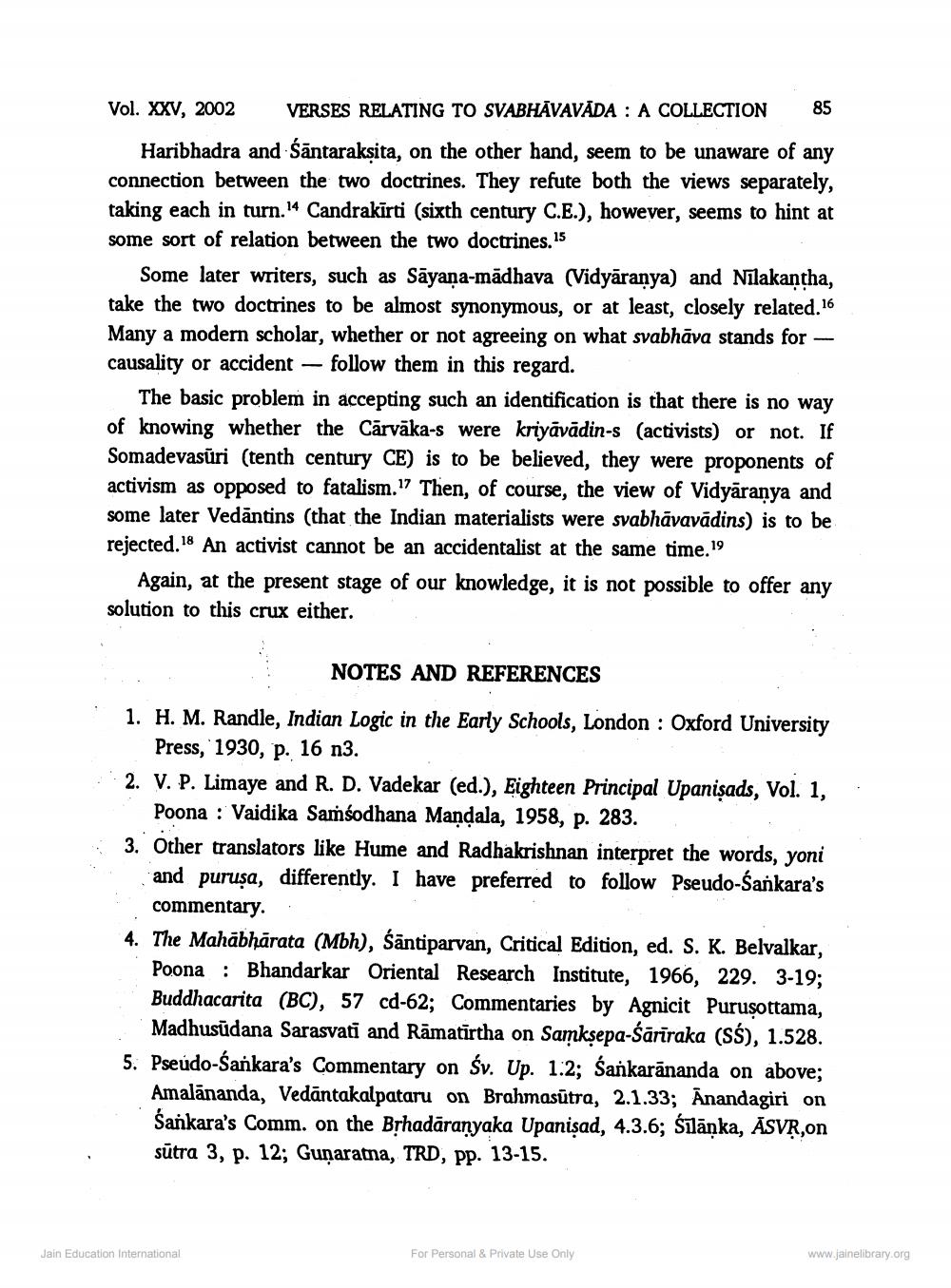________________
Vol. XXV, 2002 VERSES RELATING TO SVABHĀVAVĀDA : A COLLECTION 85
Haribhadra and śāntaraksita, on the other hand, seem to be unaware of any connection between the two doctrines. They refute both the views separately, taking each in turn.Candrakīrti (sixth century C.E.), however, seems to hint at some sort of relation between the two doctrines.
Some later writers, such as Sāyana-madhava (Vidyāranya) and Nilakantha, take the two doctrines to be almost synonymous, or at least, closely related. 16 Many a modern scholar, whether or not agreeing on what svabhāva stands for - causality or accident - follow them in this regard.
The basic problem in accepting such an identification is that there is no way of knowing whether the Cārvāka-s were kriyāvādin-s (activists) or not. If Somadevasūri (tenth century CE) is to be believed, they were proponents of activism as opposed to fatalism." Then, of course, the view of Vidyāranya and some later Vedantins (that the Indian materialists were svabhāvavādins) is to be rejected.18 An activist cannot be an accidentalist at the same time. 19
Again, at the present stage of our knowledge, it is not possible to offer any solution to this crux either.
NOTES AND REFERENCES 1. H. M. Randle, Indian Logic in the Early Schools, London : Oxford University
Press, 1930, p. 16 n3. 12. V. P. Limaye and R. D. Vadekar (ed.), Eighteen Principal Upanişads, Vol. 1,
Poona : Vaidika Samsodhana Mandala, 1958, p. 283. 3. Other translators like Hume and Radhakrishnan interpret the words, yoni
and purusa, differently. I have preferred to follow Pseudo-Sankara's
commentary.. 4. The Mahābhārata (Mbh), śāntiparvan, Critical Edition, ed. S. K. Belvalkar,
Poona : Bhandarkar Oriental Research Institute, 1966, 229. 3-19; Buddhacarita (BC), 57 cd-62; Commentaries by Agnicit Purusottama,
Madhusudana Sarasvati and Rāmatīrtha on Samkṣepa-Śārīraka (Sś), 1.528. 5. Pseudo-Sankara's Commentary on śv. Up. 1:2; Sankarānanda on above;
Amalānanda, Vedāntakalpataru on Brahmasūtra, 2.1.33; Anandagiri on Sankara's Comm. on the Brhadāranyaka Upanişad, 4.3.6; Śīlāņka, ASVĶ,on sūtra 3, p. 12; Gunaratna, TRD, pp. 13-15.
Jain Education International
For Personal & Private Use Only
www.jainelibrary.org




